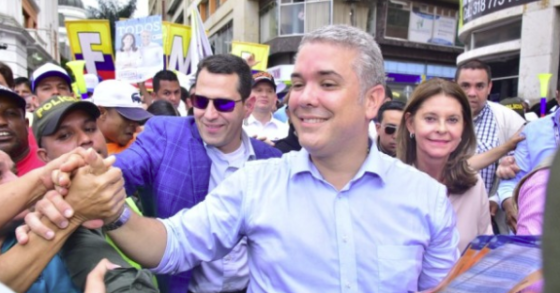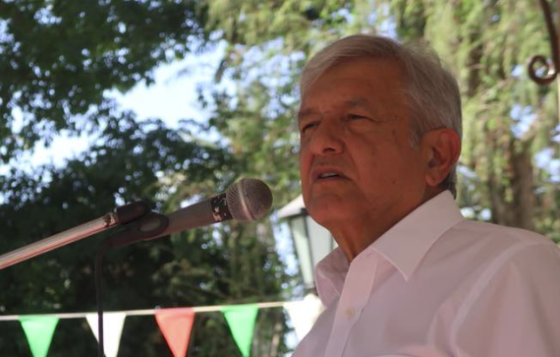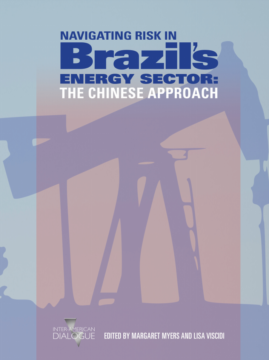
Navigating Risk in Brazil’s Energy Sector
Brazil’s oil and gas and electricity sectors are an important destination for Chinese direct investment.
A Daily Publication of The Dialogue
This year has been marked by massive and unexpectedly violent protests in countries including Chile, Colombia and Ecuador, the abrupt resignation of President Evo Morales following Bolivia’s disputed election and the Peronists’ return to power in Argentina. Will the hemisphere see continued turbulence in the coming year? Which countries are likely to be the hotspots in Latin America and the Caribbean in 2020?
Peter DeShazo, visiting professor of Latin American, Latino and Caribbean Studies at Dartmouth College and former U.S. deputy assistant secretary of state for Western Hemisphere affairs: “Predicting when and where political upheaval will occur is often difficult—few would have included Chile on any such list for 2019. That said, there are a number of macro-variables that could affect political stability in Latin America as a whole and country-by-country. A major downturn in the world economy would have broad regional implications, undermining the already vulnerable socioeconomic status of the tens of millions of Latin Americans who emerged from poverty during the years of commodity-led growth from about 2003-2013. Natural phenomena such as a major drought, earthquake or hurricane—more likely than ever with global climate change—could provoke political upheaval, with the Northern Triangle countries of Central America especially susceptible. Other threats to political stability will likely emerge from unattended weaknesses in governance throughout the region. Political polarization, distrust of government and political parties, corruption, weak rule of law and the lure of populism on the left and right undermine economic development and hollow out the moderate center. Repressive authoritarian regimes in Venezuela and Nicaragua will come under increased pressure, and Bolivia’s transition to a president not named Evo Morales won’t be easy. However, even countries with much stronger democratic institutions face challenges posed by the disparity in the distribution of wealth and opportunity that exacerbates political tension. Lack of progress in strengthening democratic governance during the years of economic boom is coming back to haunt the region.”
Fulton T. Armstrong, senior faculty fellow at the Center for Latin American and Latino Studies at American University: “Latin America and the Caribbean can change the script in 2020 if governments do more to address the underlying causes of their crises—and if resurgent popular leaders, while maintaining pressure for change, are prepared to accept evolutionary change. If Chile’s constitutional reform process addresses the needs of all, the recent convulsions will be more than a tragedy. Team Fernández in Buenos Aires could also address Argentina’s mess in a manner that moves the country forward. It’s hard to be too optimistic, however. What passes for political discourse is too often divisive tribalism. Brazilian President Bolsonaro’s incendiary rhetoric; Colombian President Duque’s willful neglect of the peace process; the messes in Peru and Ecuador; the raging crisis in Haiti; and the simmering crises in Honduras and Guatemala are bringing out the worst in leaders and laying bare societal weaknesses. The U.S. policy of ‘America First’ (meaning the United States) and restored Monroe Doctrine often appear merely to seek to have ideologically friendly allies in power. UNASUR is moribund; right-leaning countries are creating hollow alternatives, such as PROSUR; and the Rio Group (TIAR) is getting into the sanctions business (at least against one country). The OAS plays favorites—openly welcoming U.S. military intervention in Venezuela; condemning the Bolivian elections but not the coup that removed President Morales; turning a blind eye to police abuses in Chile; and remaining silent about narcocorruption and human rights violations in Honduras, the disbanding of Congress in Peru and social anomie in Haiti. The countries of Latin America need internal and international dialogue, not political warfare, to find solutions to their problems.”
Daniel Erikson, managing director at Blue Star Strategies: “2019 was full of surprises in Latin America, and the year ends without any of the major plot lines resolved. Chile’s dramatic and violent protests sparked a constitutional reform process that will consume the country’s politics in 2020. Bolivia’s cathartic break from Evo Morales has quickly transitioned into electoral uncertainty. The Peronist resurrection in Argentina has set in motion the Fernández-versus-Fernández psychodrama as the country analyzes whether Alberto or Cristina wields true power. Leaders in Colombia and Ecuador will struggle to overcome slumping commodity prices and public discontent. And of course, the tragicomic pas-de-deux between Nicolás Maduro and Juan Guaidó in Venezuela will reach its one-year anniversary on Jan. 23, with no clear end in sight. If the year in Latin American politics were a film, it would be a cliffhanger. Indeed, the ‘Empire Strikes Back’ comes to mind—the famous middle movie of the original Star Wars trilogy that ends with a wounded Luke Skywalker clinging to a weather vane beneath Cloud City, awaiting rescue. Looking ahead to 2020, there are some potential bright spots. The final ratification of the U.S.-Mexico-Canada trade agreement (USMCA) seems likely. Oil-rich Guyana will lead regional growth, but an uptick is expected in several countries, including Brazil. However, U.S. Secretary of State Pompeo’s recently unveiled mantra of ‘realism and restraint’ in Latin America suggests the United States will take a backseat in the region, especially as Washington’s political battles intensify ahead of the 2020 election. In ‘The Empire Strikes Back,’ Skywalker is ultimately rescued by his friends. Latin Americans will find no such option in the United States.”
Adam Isacson, director for defense oversight at the Washington Office on Latin America (WOLA): “Economic growth is forecast to be sluggish in much of Latin America. People are angry about inequality, living costs, corruption and the quality of basic services. They’re afraid of crime—both common and organized—and of finding themselves unemployed. This guarantees that 2020 will not be a year of stability. But it’s hard to predict where the turbulence will be worst: who would have topped their list with Bolivia, Chile and Ecuador a year ago? Brazil and Mexico are good guesses: populist presidents run into trouble if they don’t deliver in their second year in office. Mexicans are tiring of stubborn insecurity, and organized crime is challenging the López Obrador government ever more directly. A weak economy doesn’t help. A badly polarized Brazil could be one bus fare increase away from mass protest, as happened in 2013. Bolivia’s elections, when they happen, promise to be fraught. In Colombia, an unpopular and fiscally constrained president is hitting serious governability issues. Venezuela could go either way: Maduro will either muddle through or—ideally—negotiate an exit. Much depends on whether the opposition can manage to restore its flagging momentum. Either way, expect continued large-scale refugee flows. In Honduras and Nicaragua, long-serving authoritarian leaders are unpopular and could face strong challenges. And everywhere, militaries are getting pulled back into politics. Those countries seem like the likeliest candidates for turbulence. But then, as happened in 2019, something unforeseeable could happen in a place that seems deeply stable—Costa Rica? Uruguay?—or frozen in time, such as Cuba. Prediction is a tough business.”
Joy K. Gallup, partner in the corporate department at Paul Hastings: “The political and economic turmoil in Latin American countries that were relatively stable in the recent past, including Chile, Colombia and Ecuador, mirror similar popular demonstrations throughout the world, including Hong Kong and India. The roots of these demonstrations go deeper than the ease of organizing large-scale protests through social media nowadays and can often be traced to government actions that raise costs for the working class or perceived corruption. Each country in the region has its own unique issues, but the rapid swing of the pendulum from left to right, or vice versa, as in the fall from power of Evo Morales in Bolivia and Argentina’s October election results, creates continuing economic and social instability. Chile’s plans to rewrite its constitution may not prevent its economy from sliding into recession. Colombia and Ecuador both have to rethink their reform plans due to the protests, which is likely to affect their economic growth. While international investors have been hoping to see Venezuela’s debt restructuring finally take shape in the coming year to help solve that country’s social and economic meltdown, Argentina also will need to face its own sovereign debt crisis (again) or face further turbulence. In Brazil and Mexico, the two largest economies in the region, the hard left-wing president in Mexico appears to be riding the economy into a recession, while the ultra-right wing president in Brazil seems to be enjoying an economic upswing. The one constant seems to be the rapidity of change in the region.”
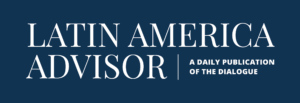 The Latin America Advisor features Q&A from leaders in politics, economics, and finance every business day. It is available to members of the Dialogue’s Corporate Program and others by subscription.
The Latin America Advisor features Q&A from leaders in politics, economics, and finance every business day. It is available to members of the Dialogue’s Corporate Program and others by subscription.
Brazil’s oil and gas and electricity sectors are an important destination for Chinese direct investment.
Iván Duque, a conservative former senator, on Sunday won Colombia’s presidential runoff election. What does it mean for the country?
Mexicans go to the polls on Sunday, July 1, for the country’s presidential, legislative and local elections. What can we expect?
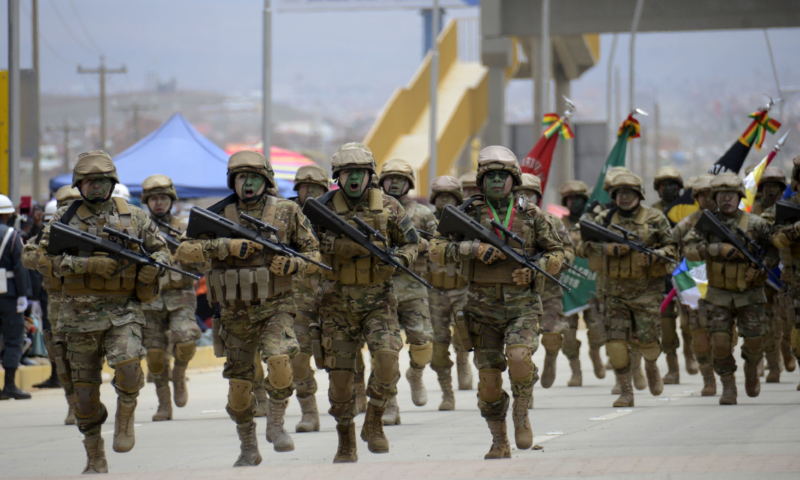 Around the region, militaries are getting pulled back into politics as social unrest has increased this year, Adam Isacson below. Bolivia's military is pictured above. // File Photo: Bolivian Government.
Around the region, militaries are getting pulled back into politics as social unrest has increased this year, Adam Isacson below. Bolivia's military is pictured above. // File Photo: Bolivian Government.
